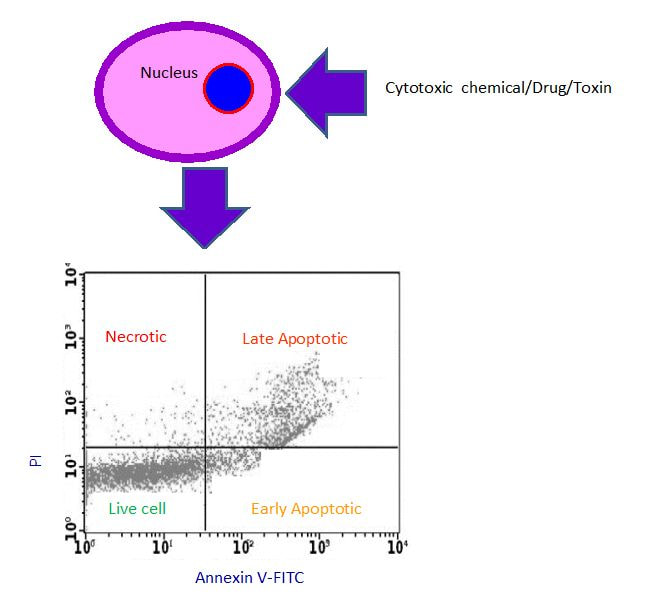Subtopic 4.3: Necrosis Assay
The necrosis assay is performed by flow cytometry analysis with staining of Annexin V and propidium iodide (PI) in the cells. The cells are considered in the stage of necrosis, if the cells lose membrane integrity and die promptly due to cell lysis when exposed to chemicals, drugs, toxins or foreign antigens. In necrosis, cells show swelling, loss of membrane integrity and disruption of metabolism. Cells with necrosis do not go to stage of apoptosis, apoptotic cell may undergo secondary necrosis. These necrotic cell will shut down metabolism, lose membrane integrity, lyse and formed cell injury autolysis.
The flow cytometric analysis for necrosis assay showed that the cells stained positive for both FITC Annexin V and PI are in the end stage of apoptosis and are undergoing to the stage of necrosis as dead cells stained PI positive. Cells that stain negative for both FITC Annexin V and PI are alive and not undergoing apoptosis or necrosis (Figure 3).




